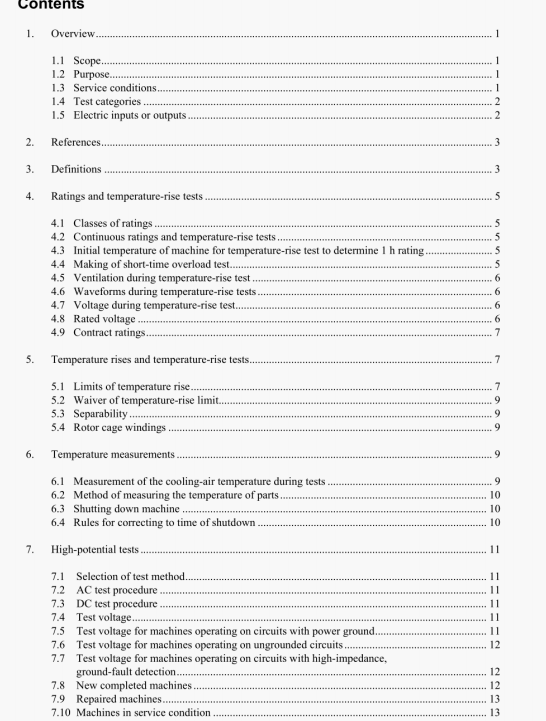IEEE 11:2000 pdf free download.IEEE Standard for Rotating Electric Machinery for Rail and Road Vehicles.
4.1 Classes of ratings
This standard recognizes three classes of ratings: continuous rating. I h rating, and short time overload rating.
4.2 Continuous ratings and temperature-rise tests
4.2.1
The continuous rating of a machine applied in duly that is long compared to the thermal time constant of the machine generally will be the point of greatest continuous tractive effort with the highest continuous flux level. The test shall be performed with inputs as in service unless 4.6.1 applies. It shall be ascertained that no other point is limiting.
4.2.2
The continuous rating of a machine applied in duty that has short cycles compared to the thermal time constant of the machine will he the steady rating that produces the same heating with the same ventilation in the same time as the duty cycle. This continuous rating is calculated from speed, time, distance, mis current, etc.. over the duty cycle. Ripple in dc or harmonics in ac change during the duty cycle so it may not be possible to provide the continuous rating point with waveforms as in service. Subclause 4.6.1 may apply.
A duty cycle test shall be performed with the pulse control to be used in service to demonstrate that the temperature rises are comparable to those at the calculated continuous rating. The machine shall be operated in simulation of the actual duty cycle, including dwell time, as realistically as possible. The cycle shall be repeated until temperature rises have leveled. The test shall end at a temperature rise peak, if appreciable.
4.2.3
Where agreed. a machine may be tested to find the greatest continuous rating that will meet temperature rise limits with assurance. Such a rating must be used with care that other conditions have not changed to render the rating inapplicable.
4.2.4
A continuous temperature test shall be continued until the temperature rises that can be observed during the test have attained steady final values. See Table I in 5.1. In order to abridge the long time required to attain steady temperatures, reasonable overload or reduction of ventilation during the prelimina,y heating period is permissible.
4.3 Initial temperature of machine for temperature-rise test to determine I h rating
The temperature-rise test to determine the I h rating shall commence only when the windings and other parts of the machine arc within 4 0C of the cooling-air temperature at the time of starting the test.
IEEE 11:2000 pdf free download
